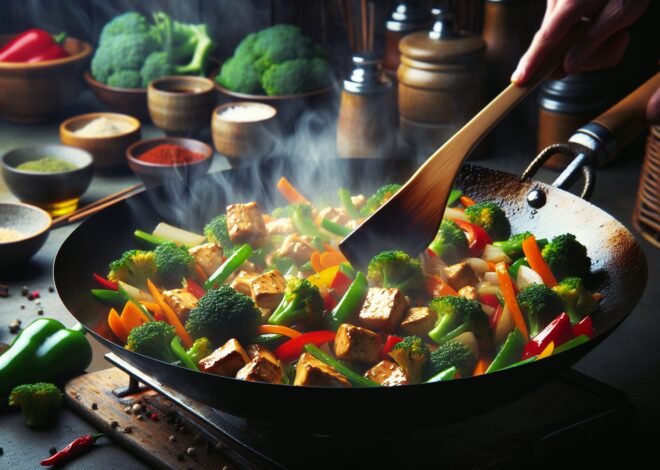
Oven Calibration: Why It Matters and How to Do It
If your baked goods often come out undercooked or overcooked, your oven may be off from the actual temperature set. Even slight calibration issues can make a difference in cooking results. This guide covers practical tips to test, adjust, and calibrate your oven for more reliable results in your favorite recipes. With just a few simple checks, you can bring your oven back to peak performance, ensuring every dish bakes to perfection.
Why Calibrating Your Oven is Important
Calibrating your oven might seem trivial, but it’s crucial for culinary success. Inconsistent temperatures can ruin recipes and waste ingredients. Understanding and maintaining accurate oven settings ensures that your dishes turn out perfectly each time.
Effects of Temperature Inconsistencies on Cooking and Baking
Temperature inconsistencies in your oven can lead to uneven cooking or baking, which affects the texture and taste of your dishes. Cakes might dome or sink in the middle, roasts could dry out on the outside while being undercooked inside, and your soufflé might collapse. These problems arise because the oven’s actual temperature doesn’t match the setting you choose, causing unpredictable results.
Such inconsistencies can also alter cooking times. You might find yourself constantly checking on your food, unsure if it’s done cooking. This leads to frustration and takes the joy out of preparing meals. Precise temperature control is key to following recipes accurately and achieving the desired results every time.
How Calibration Helps Achieve Accurate Results
Calibration is the process of adjusting your oven to ensure its temperature setting reflects the actual temperature inside. This adjustment corrects any discrepancies, resulting in more reliable cooking outcomes. Once calibrated, your oven will perform as expected, leading to perfectly baked cookies, evenly cooked meats, and beautifully risen bread.
By calibrating your oven, you create a consistent cooking environment, which is vital for the success of precise recipes, especially in baking. This reliability not only enhances the quality of your meals but also saves you time, money, and stress. With a calibrated oven, you can confidently explore new recipes and cooking techniques.
When and How Often to Calibrate Your Oven
Calibrating your oven should be a regular part of its maintenance. Ideally, you should check and adjust your oven every six months. However, if you notice your food consistently overcooking or undercooking, it’s a sign that your oven might need calibrating sooner.
Pay attention to signs like uneven baking, burnt edges, or frequent recipe failures. These issues often indicate that your oven’s temperature is off. Regular calibration ensures that your oven continues to function optimally, providing consistent results and extending the appliance’s lifespan.
How to Test Your Oven’s Temperature
Testing your oven’s temperature is a straightforward process that can save you from culinary disasters. It involves using an oven thermometer to ensure your settings are accurate. Here’s how you can do it effectively.
Using an Oven Thermometer Effectively
An oven thermometer is an essential tool for checking your oven’s temperature. It gives you a true reading of the heat inside, unlike your oven’s built-in gauge, which can be inaccurate. Place it in the oven and adjust your settings to reach the desired temperature. Wait for the thermostat to stabilize before recording the reading.
Using an oven thermometer helps identify any discrepancies between the set temperature and the actual cooking environment. It’s a simple, yet effective, way to assess your oven’s performance and determine if calibration is necessary.
Placing the Thermometer Correctly in the Oven
Correct placement of the oven thermometer is crucial for accurate readings. Position it in the center of the middle rack, where most food is cooked. This placement ensures that you get a representative temperature reading of the area where your dishes will bake.
If you’re testing multiple racks, move the thermometer to each rack’s center, allowing the oven to stabilize before taking new readings. This comprehensive approach reveals any temperature variations across different oven sections, assisting in identifying hot spots.
Running a Simple Calibration Test with Preheating and Timing
To perform a calibration test, preheat your oven to a standard temperature, such as 350°F (175°C). Allow it to stabilize for 10-15 minutes before checking the temperature. Record the reading on the oven thermometer.
If there’s a discrepancy, adjust your oven settings according to the manufacturer’s instructions. Retest to confirm that the temperature matches the setting. This simple process ensures that your oven maintains the correct temperature, improving the success of your cooking and baking endeavors.
Steps to Calibrate Different Types of Ovens
Calibrating an oven varies depending on whether it’s analog or digital. Each type requires distinct steps to achieve accurate temperature settings. Follow these guidelines to calibrate your oven correctly and ensure optimal performance.
Manual Calibration Steps for Analog Ovens
For analog ovens, calibration typically involves adjusting the oven’s thermostat. Start by removing the thermostat knob, which usually has a small set screw on the back. Turn the screw to adjust the temperature. Each oven is different, so consult your manual for specific guidance.
After adjustments, use an oven thermometer to verify the accuracy of the new setting. Continue fine-tuning until the thermometer reading aligns with the oven’s set temperature. Regular checks ensure your oven remains precise over time.
Digital Calibration for Newer Ovens
Digital ovens often have a calibration feature built into the control panel. Access this feature through the oven’s menu, usually by pressing a combination of buttons. Your manual will provide detailed instructions.
Once in calibration mode, adjust the temperature setting as needed. Use an oven thermometer to compare and verify the accuracy of your adjustments. Digital calibration allows for precise control, ensuring your oven operates at the correct temperature.
Adjusting Temperature with Dials or Settings
Some ovens allow you to manually adjust the temperature settings via dials or electronic controls. Refer to your oven’s manual for specific instructions on making these adjustments. The process typically involves entering a mode that lets you tweak the temperature settings.
This method requires patience and precision, as small changes can significantly impact the oven’s performance. Regular testing with an oven thermometer ensures these adjustments are effective and maintain the desired temperature over time.
Additional Tips for Accurate Oven Performance
Ensuring accurate oven performance involves more than just calibration. Consider these additional tips to maintain even cooking and optimal results. These practices help prevent common issues and extend your oven’s lifespan.
Understanding Hot Spots and Rack Placement
Every oven has unique hot spots—areas that heat up more than others. Understanding these hot spots is key to placing your food correctly to ensure it cooks evenly. Conduct tests by placing slices of bread on different racks to identify these areas.
Proper rack placement is also crucial. Most recipes assume cooking on the middle rack, where heat is most consistent. Adjust racks based on your oven’s characteristics and the dish you’re preparing to achieve the best results.
Regularly Cleaning for Consistent Heat Distribution
Regular cleaning of your oven is essential for maintaining even heat distribution. Grease and food residue can build up, affecting the oven’s ability to heat consistently. Wipe down the interior regularly and perform deep cleans as needed.
A clean oven not only performs better but also improves food flavor and safety. Avoid harsh chemicals that can damage the oven’s surfaces, opting for natural cleaning solutions when possible.
Knowing When to Call a Professional for Repairs
Sometimes, calibration and cleaning aren’t enough to fix oven issues. If you experience persistent temperature problems, unusual noises, or electrical issues, it’s time to call a professional. They can diagnose and repair complex problems that go beyond simple adjustments.
Professional maintenance ensures your oven operates safely and efficiently, preventing further damage. Regular checks by qualified technicians can catch potential issues early, saving you from costly repairs down the line.
Conclusion
Calibrating your oven is a simple yet powerful step toward consistently well-cooked meals and baked goods. By understanding how to test your oven’s accuracy and make adjustments, you’ll ensure that your oven temperature matches what’s set. This precision benefits everything from delicate pastries to roasted meats, resulting in more predictable and satisfying results. Calibrating your oven regularly or when you notice unusual cooking times will keep your culinary efforts on track. With these calibration tips, you can feel confident that each dish is cooked to perfection and save time spent on recipe adjustments. Consistency in temperature is key, and calibration helps achieve that with ease.
FAQ
How do I know if my oven needs calibration?
Uneven cooking, overcooked or undercooked dishes, and inaccurate temperature readings suggest that your oven may need calibration. Regularly checking your oven’s performance can prevent these issues.
How often should I calibrate my oven?
Annual calibration keeps your oven in top condition. If you bake often or notice performance issues, consider doing it more frequently to maintain accuracy.
What tools do I need to calibrate my oven?
A reliable oven thermometer is essential. An owner’s manual is also useful for understanding your specific oven’s calibration process.
How accurate are built-in oven thermometers?
Built-in thermometers often lack precise accuracy. External oven thermometers provide a more reliable temperature reading.
Can I calibrate my oven without a thermometer?
Calibrating without a thermometer is challenging. However, using a recipe with known cook times and adjusting based on results can help, though it’s less precise.
Why do some ovens lose accuracy over time?
Frequent usage, wear and tear, and aging components contribute to an oven’s loss of accuracy. Regular maintenance helps counter these effects.











